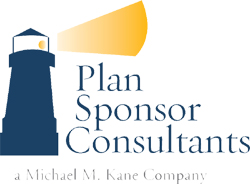Many employers today are turning to auto enrollment as a way to increase retirement plan participation and to help employees better prepare for their future. Yet many of these same employers worry about properly fulfilling their fiduciary responsibilities with auto enrollment, or worse yet, do not even realize they have responsibilities.
Luckily, there is a way to address these questions by implementing Qualified Default Investment Alternatives. The Pension Protection Act of 2006 amended and expanded upon some of the rules and regulations with ERISA, and one of the key changes included easing employer liability concerns with auto enrollment by creating QDIA safe harbor guidelines.
The amendment “provides a safe harbor for plan fiduciaries investing participant assets in certain types of default investment alternatives in the absence of participant investment direction,” as explained by the U.S. Department of Labor (DOL) in Default Investment Alternatives Under Participant-Directed Individual Account Plans.
The DOL fact sheet points out that while automatic enrollment plans can improve participation, some employers were still reluctant to provide this feature because “they are potentially liable for investment losses that may occur in such plans.” The hope was that the amendments would provide a clearer and easier way for employers to meet the fiduciary requirements.
Unfortunately, approximately half of all plan sponsors are still not taking advantage of QDIA safe harbor protections, according to the 2015 study Inside the Minds of Plan Sponsors: Assessing the State of Defined Contribution Plans Today by AllianceBernstein L.P.
Smaller employers in particular are most likely to be missing out on this opportunity, the study notes and suggests that the reason is a lack of understanding about the QDIA safe harbor protections. The findings also note that many employers simply don’t understand their fiduciary responsibilities with auto enrollment.
So when does a QDIA come into play, and what are the main considerations? While a one-on-one meeting is the best method for going over all the details, here are the primary points you should know about fiduciary responsibility with auto enrollment and how the QDIA can provide a safe harbor:
- ERISA considers that your fiduciary responsibilities have been met if participants can “exercise control over the investment of assets in their plan accounts.”
- If participants do NOT specify an investment direction, they have, in a sense, exercised control and you can fulfill your fiduciary responsibility by investing the assets for them in a QDIA that meets the following ERISA requirements:
- There is no fee to transfer the investment to another investment option within the plan.
- The assets are managed by an investment manager or a registered investment company.
- The investment is diversified and is not tied to company securities.
- The investment is a target date fund, a balanced fund, or is professionally managed.
Be sure to consult with an advisor to discuss the best QDIA investment direction for the varying needs and demographics of your participants. Your advisor can also help evaluate fees, create a strategic plan, and instill proper decision-making documentation.
The opinions voiced in this material are for general information only and are not intended as authoritative guidance or tax or legal advice. You should consult with your attorney or advisor for guidance on your specific situation.


